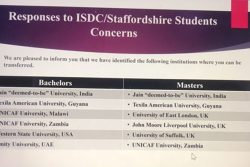Introduction
The American saying, which originated in the early 1970s postulates that: “if it isn’t broke don’t fix it” comes to mind every time I have to ponder reflexively on Guyana’s present-day hodge- podge ensemble of exchange rate arrangements. The saying basically admits to the underlying fact that, the de facto exchange rate mechanisms do work, by whatever miracle one invokes, but that remains a mystery. Seeking to repair them may cause unseen and unwanted harm.
In today’s column I explore these mechanisms in Guyana’s exchange arrangements. Further, I am fully aware that efforts in the direction of seeking to address them might perversely excite unintended issues of momentous concern, which are linked to the direction of likely future reforms.
Assessment
At this juncture I recall the basic formulation or thesis that I sought to elaborate for readers that I introduced in last week’s column. Briefly:
“Even as Guyana becomes more and more a major oil producing nation or Petrostate over the medium- to long-term, there remains a strong, and growing case for incorporating the elimination of persistent poverty, pauperizing wages and their socio-economic perversities, as explicit targets for monetary policy design and exchange rate framework to address. I certainly agree that a gradual shift towards greater exchange rate flexibility will allow the economy to better withstand shocks and maintain competitiveness. However that is not full targeting of the country’s needs”. [ Source, Author]
Line of March
The revealed line of march of the current crop of analytical and research studies seems to be avoiding the considerations raised above, which before the oil discoveries dominated discussion on Guyana. This crop includes independent scholars, local and diaspora contributors, along with a number of professionals attached to regional and international bodies. The reality though is that poverty and under development still plague Guyana
Indeed, almost as an unwritten, but binding rule, analysts of varying shades focus more narrowly. Moreover, they seem to agree that the Bank of Guyana anchors inflation to the nominal (official) exchange rate. Further, it is presumed as well that, this policy choice ensures an outcome in which domestic inflation will tend to increase when the Guyana dollar exchange rate is depreciating.
It is also reported by these analysts that the general practice of the Authorities is to fix the nominal exchange rate [that is calculate] it as a weighted average of the prevailing buying rates of the three largest bank cambios.
This has led to strong criticisms in business and financial circles. This is mainly due to the fact that as a rule, this technique allows banking businesses to potentially [and also improperly manipulate both sides of their transactions; buying and selling rates.
As would be easily deduced, such criticisms arise because the chosen cambios are placed in a position where they are able to participate effectively in both export and import businesses.
Yet another consideration is that the private sector and private individuals do not confront the buyers of foreign currencies, Observers have further contended that the rate at which the selected three cambios sell the highly prized US dollar to them, in effect, allows the nominal exchange rate and the buying rate of the three selected cambios to remain stable, even though the selling rate fluctuates more.
Some analysts point out correctly that the selling rate of the Guyana dollar is kept higher than the buying rate thereby assuring rate stability through the spread between the sell and buy rates. Typically, this is limited to G$3.00. Purportedly, this operates as a sort of a stabilizer, it is argued.
Additionally, these authors claim that it seems to reduce fluctuations of the buying, selling and keeps official rates relatively stable,. However, it does nothing to prevent their levels from rising.
IMF as regulatory authority
Regrettably, at this stage of the development of Guyana’s exchange rate regime, not many persons are fully cognizant of the fact that the IMF is the designated Regulatory Authority for its 190 Member countries; including Guyana Under its Article IV consultations, provision is made for IMF surveillance. The surveillance adapts to the evolving economic and financial landscape
Indeed, its 2021 Comprehensive Surveillance Review (CSR) has identified priorities for Fund surveillance, both in terms of content and modalities. And, the four surveillance priorities identified in the CSR are:
(i) confronting risks and uncertainties,
(ii) preempting and mitigating spillovers,
(iii) ensuring economic sustainability, and
(iv) adopting a more unified approach to policy advice.
One must acknowledge that there are undoubtedly huge grey areas [between, as well as within] the paired notions of guidance and surveillance, directives and compliance Balancing these is essential for ensuring exchange rate stability.
“The use of the exchange rate as the nominal anchor is currently appropriate. Especially alongside concurrent and increased efforts to 1] diversify the non-oil economy; and 2] deepen the domestic financial markets. The accumulation of substantial buffers in the National Resource Fund [NRF] will strengthen Guyana’s headroom to maintain a stable exchange rate,” it added.
Conclusion
Going forward the IMF position seems to be that, over the long-term, as Guyana becomes a major Petrostate, it will support Government-led efforts to deepen financial markets as a prelude to revising the monetary framework.
I’ll pursue these issues in the next column focusing on the IMF guidance.









